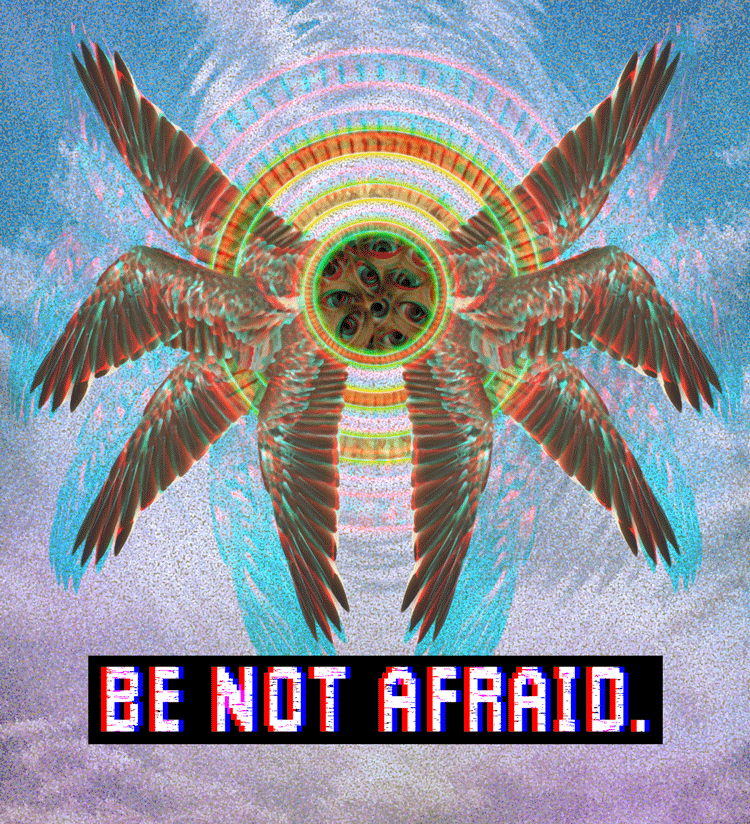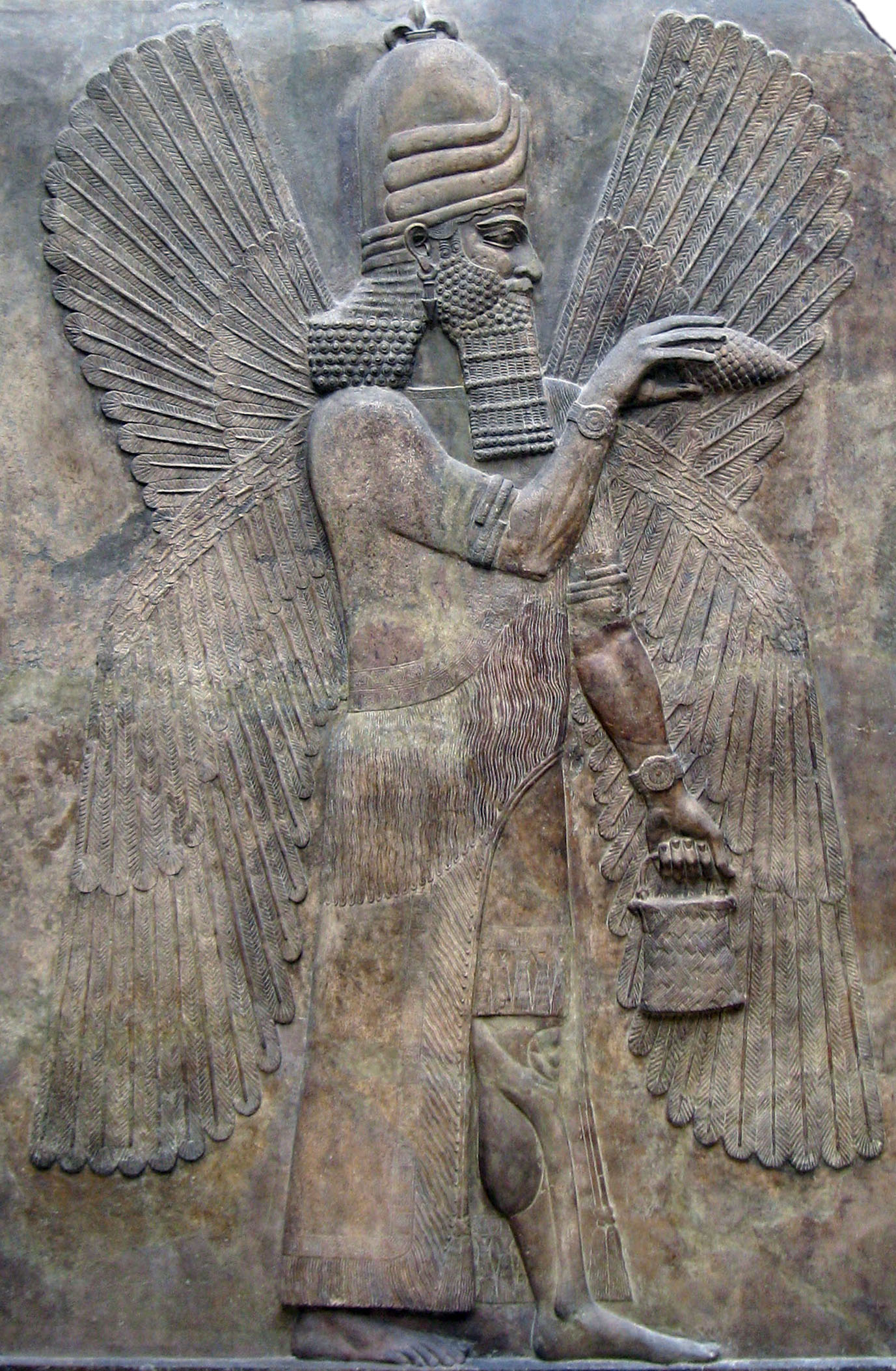From Sumer to Abraham: The Story of the Angels
Angels make up a great deal of popular culture. But where did they come from? And where did they go? Where did they come from, Angelic Joe?

When you think of angels, what do you picture? Do you think of winged humanoid figures? Do you think of animal-human hybrids? Or do you think of eldritch gyroscopes dotted with eyes and glowing lights? If your answer included any of the above, you’d be correct.
Throughout history, the creature known as the Angel has taken on a variety of different forms and roles in human mythology, from divine messengers to harbingers of the apocalypse. But what are angels, really? To answer this question, it’s time to accelerate to 88 miles per hour and take a trip through time to discover the strange origins of one of history’s most popular cryptids.
Contrary to popular belief, angels did not originate from Zoroastrian texts -- but from Sumerian religion. As discovered by 20th-century archaeologists, the Sumerians believed in a pantheon of winged beings called the Annunaki, the seven capital deities of Sumerian legend. Worshipped starting around what is believed to be 2112 BCE, the Annunaki were responsible for the Sumerian-Mesopotamian creation story, as well as a set of notable events in their mythological narratives, such as popular fables and divine warfare.

They were later succeeded by the Hittites and Hurrians, who adopted the Annunaki from the then-declining Sumerians and incorporated them as a set of twelve gods of the underworld. It is commonly believed among archaeologists, in fact, that these myths helped to inspire the Judeo-Christian legends of hellish, fallen angels such as Azazel and Abaddon, the patron demons of scapegoat and destruction.
Several generations later, around 600 BCE, the ancient Iranian prophet Zarathustra helped to found the pre-Abrahamic religion of Zoroastrianism, which would lay the groundwork for Judaism, Christianity, and later Islam. It was here that angels developed a hierarchy similar to that of 21st-century Abrahamism. Under Zoroastrianism, angels occupied one of three ranks. They comprised the Amesha Spentas, or Archangels; they were the supreme beings under Ahura Mazda, the Zoroastrian creator deity -- the first of its kind in human religious history. Under the Amesha Spentas were the Fravashis, or Guardian Angels, which acted as media between the human and divine realms; they also served as moral examples to the human realm, as explained in Zoroastrian texts. Beneath them were the Yazatas, the standard angels. The Yazatas, which often have supernatural or otherwise superhuman abilities, were a broad group that comprised any spiritual being of venerable stature, such as Airyaman, the Yazata of friendship and healing. As interesting as Zoroastrian angelology is, however, it only went so far. Much like what vertebrates were to the early animal kingdom, it would be Judaism that took angelology another step further.

A theological offshoot of Zoroastrianism, Judaism emerged at around a similar date to Zoroastrianism, perhaps as an alternate denomination or retelling of Zarathustran myths. Within Judaism was the supreme being of Yahweh, or Adonai, who essentially served the same role as Ahura Mazda; Yahweh was the creator of humanity, Earth, and the universe itself. Under Yahweh were a distinct set of angelic ranks that arose from Jewish mystics. These mystics, which studied and practiced Kabbalah, the mystical interpretation of the Old Testament, formed the basis for biblical angels as we know them today.
Within biblical angeldom are three classes, or “orders,” of angels, ranging from first to third. At the top was the First or Highest Order were the Seraphim, the Cherubim, and the Thrones -- the most powerful angels, closest to Yahweh across the biblical mythos. The Seraphim appear as escorts for Yahweh’s holy throne; they encircle God’s moving throne as bastions or sentinels. In appearance these humanoids are very familiar, possessing six wings, two of which fold inwards to conceal their torsos.

Next up we have the Cherubim, who appear as hybrids of various animal species, usually mammals and/or birds of some variety. Guarding the gates to Eden and/or Heaven (depending on which scripture you look at and the translation thereof), the Cherubim are, in fact, never depicted as chubby winged babies until the adolescent days of the Byzantine Empire, when a burgeoning Christianity was just starting to spread across Eurasia. Traditionally, Cherubs are more akin to warriors or guardsmen, possessing fearsome claws and broad wings.

On a more horrifying note, we have the Thrones, or the Ophanim -- the source of all memes surrounding biblically-accurate angels. These Ophanim are perhaps the strangest of all angels, taking the form of concentric rings lined with eyes and/or gilded plates, with wings emanating from a central light source in some depictions. The Ophanim serve as the wheels that allow Yahweh’s throne to move, and are the closest of the Highest Order to Yahweh.

Lower on the list is the Second Order, which comprises the humanoid Dominions, Virtues, and Powers. These angels are kind of like the middle-class residents of the Judeo-Christian cosmos, with the Dominions passing on godly orders to the Virtues, who act as conduits for Earthly miracles. Meanwhile, the Powers manage the movement of the heavenly bodies, such as the planets and stars -- similar in duty to Mesopotamian deities such as Habu and Marduk, the gods of Mercury and Jupiter. Habu's biblical counterpart is Agiel, and Marduk's is Zadkiel.

At the bottom of a barrel is the Lowest Order, which is made up of the Principalities, Archangels, and standard Angels. All humanoid, these angels are closer than any other Order to the human realm. Like the Dominions, the Principalities guide human nations and often pass on orders to Archangels, who guard and protect the nations of the Christian world. Often they are also referred to as Yahweh’s seven spirits, or the manifestation of Yahweh’s existence. Regular Angels basically just act as guardians and messengers for humans, relaying information from higher angels to prophets such as Moses and Ezekiel, who then, supposedly, guided the Israelites in their relationship with Yahweh.
Overall, angelic hierarchy remained the same throughout Christian history, with Ophanim and Cherubim taking on more humanoid features towards the end of the European Dark Ages (~400 to ~1400 CE). By the 20th century, almost all Judeo-Christian angels were either humanoid or formless, serving as messengers of the creator deity. In Islam, there is a similar hierarchy, with all angels serving as messengers between Allah and humanity, often taking on roles such as the news of good tidings or the news of pestilence. As Islam first appeared around 600 CE, it is possible that Muslim angelology resulted from an offshoot of Judeo-Christian angels from the Lowest Order, creating more of a sense of god-to-human connection many centuries before the United States’ Second Great Awakening.
Today, angels make up a tremendous aspect of both sacred and popular culture, from the angelic relics of Abrahamic religions to icons in media across the world. For instance, the 1996 anime Neon Genesis Evangelion made use of biblical imagery and angelic allusions to illustrate the coming-of-age story of Shinji Ikari, who pilots a mechanical cyborg to combat hostile aliens known as Angels. This anime is one of my favorites of all time, and is part of the reason why I am fascinated by Abrahamic mythology.

Much like human religion as a whole, angels have a rich and detailed history as part of our folktales and fables. So the next time you see a “Be Not Afraid” meme on the Internet, remember where those spinning wheels of light come from.